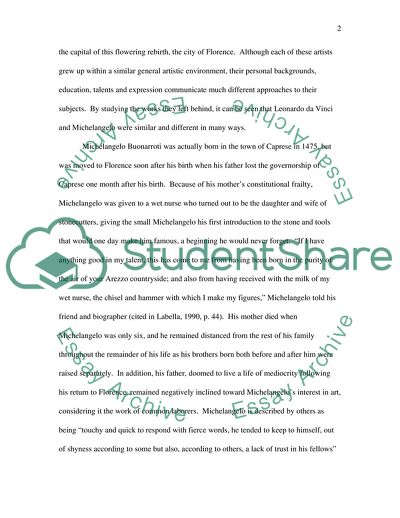Cite this document
(Michelangelo and Leonardo: Artists of the Renaissance Essay, n.d.)
Michelangelo and Leonardo: Artists of the Renaissance Essay. https://studentshare.org/visual-arts-film-studies/1703783-thesis-leonardo-da-vinci-and-micheloangelo-were-similar-and-different-in-many-ways
Michelangelo and Leonardo: Artists of the Renaissance Essay. https://studentshare.org/visual-arts-film-studies/1703783-thesis-leonardo-da-vinci-and-micheloangelo-were-similar-and-different-in-many-ways
(Michelangelo and Leonardo: Artists of the Renaissance Essay)
Michelangelo and Leonardo: Artists of the Renaissance Essay. https://studentshare.org/visual-arts-film-studies/1703783-thesis-leonardo-da-vinci-and-micheloangelo-were-similar-and-different-in-many-ways.
Michelangelo and Leonardo: Artists of the Renaissance Essay. https://studentshare.org/visual-arts-film-studies/1703783-thesis-leonardo-da-vinci-and-micheloangelo-were-similar-and-different-in-many-ways.
“Michelangelo and Leonardo: Artists of the Renaissance Essay”. https://studentshare.org/visual-arts-film-studies/1703783-thesis-leonardo-da-vinci-and-micheloangelo-were-similar-and-different-in-many-ways.


